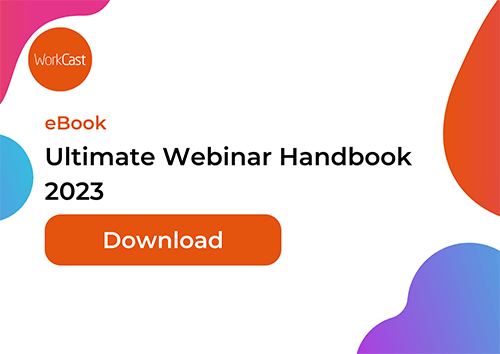In the modern era of digital communication, webinars have emerged as a powerful tool for connecting with audiences, generating revenue, and promoting products or services. As the popularity of webinars continues to grow, so does the need for organizers to understand the impact and effectiveness of their efforts. This is where analytics come in, playing a pivotal role in the success of webinars by providing valuable insights that guide future decision-making and help improve overall performance.
The Power of Webinars
Webinars have revolutionized how businesses, educators, and thought leaders engage with their target audiences. Online events provide a platform for hosting thought leadership sessions, product launches, workshops and presentations, allowing participants to join from anywhere in the world. The ability to deliver a live, interactive experience contributes to their effectiveness in conveying messages, fostering engagement, and generating qualified leads.
Enter Webinar Analytics
While the concept of webinars isn't new, the technology that underpins them has evolved significantly in the last few years. One of the most impactful advancements has been the integration of analytics tools that enable organizers to collect, analyze, and interpret data related to their webinar's performance. This data-driven approach empowers organizers to make informed decisions, enhance their content, and create a more compelling experience for participants.
Measuring Success Through Webinar Analytics
Analytics in webinars provide a wealth of information that goes beyond mere registration numbers. Let's explore some key metrics that play a crucial role in measuring success:
Webinar Attendance and Participation Rates
These metrics offer insights into the popularity of your webinar and the level of engagement from participants. It's important to track both the number of attendees and the percentage of registrants that attended the live webinar.
Audience Demographics
Depending on your registration workflow, analytics can reveal valuable information about your audience's demographics, including geographic location, industry, job roles, and more. This information is essential for tailoring content to your specific target audience and can also give you an idea of the quality of the registrations and attendees at your webinar.
Webinar Engagement Levels
You can measure the engagement level of participants during the webinar. This includes interactions such as asking questions, participating in polls, using chat features, and more. You can even see an engagement score for each attendee based on these interactions. High engagement indicates a strong connection with the content and suggests someone may be a more qualified lead.
Webinar Conversion Rates
If the goal of your webinar is to drive a specific action (e.g., product purchase, sign-up, etc.), tracking conversion rates helps you understand the effectiveness of your call-to-action strategies. URL redirects can be used to direct attendees to a sign up or purchase page.
Drop-off Points
Analyzing where participants drop off or lose interest in the webinar can provide insights into potential improvements in content delivery, pacing, or engagement strategies.
Feedback and Surveys
Post-webinar surveys and feedback forms help gauge participant satisfaction and collect suggestions for improvement. Analytics tools can help organize and interpret this qualitative data.
Improving Performance with Webinar Analytics
The insight you gather through analytics can serve as a blueprint for enhancing your future webinar programme, and here's how:
Content Enhancement
By analyzing the engagement patterns and feedback you’re seeing, you can identify what content resonates most with your audience. This knowledge allows for more focused and impactful content creation.
Optimized Timing
Analytics can help determine the best time and day to host a webinar based on participant behavior, ensuring maximum attendance and engagement. This is something that takes some trial and error, but looking at this information can make the job much easier!
Webinar Personalization
Audience demographics and engagement data enable organizers to personalize content, tailoring it to the specific needs and interests of participants. This ensures that your audience sees you as a valuable asset, and will be more likely to return to see more of your content.
Continuous Improvement
Continuously monitoring analytics and comparing data across multiple webinars can reveal trends and areas for improvement, leading to a constant cycle of refinement.
Testing Strategies
A/B testing various webinar elements, such as templates, headlines, and calls-to-action, based on analytics can help identify what makes people sign up and what your attendees respond to best.
Conclusion
That all said, analytics are indispensable tools for measuring the success of webinars and driving improvements in performance. They provide organizers with the ability to gain deep insights into audience behavior, preferences, and engagement levels. Armed with this information, you as a webinar producer can refine your strategy, create more impactful content, and ultimately achieve higher levels of engagement and conversion for a more successful webinar programme. As the digital landscape continues to evolve, harnessing the power of analytics in webinars will remain a key driver of success in effectively engaging and connecting with audiences worldwide. Speak to a WorkCast expert today on how you can utilise your webinar's metrics for improved performance!
Share this
You May Also Like
These Related Stories
-1.jpg)
Running Webinars During COVID-19: What You Need to Know
How To Use Video In B2B Marketing: 3 Ways



